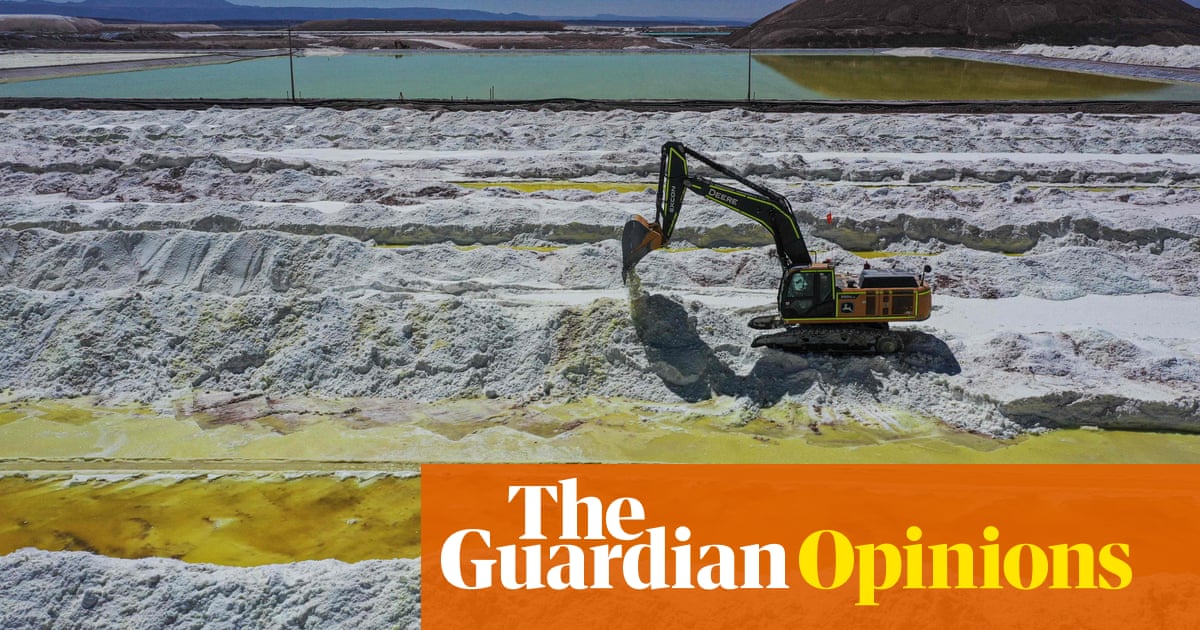Despite its name, the infrastructure used by the “cloud” accounts for more global greenhouse emissions than commercial flights. In 2018, for instance, the 5bn YouTube hits for the viral song Despacito used the same amount of energy it would take to heat 40,000 US homes annually.
Large language models such as ChatGPT are some of the most energy-guzzling technologies of all. Research suggests, for instance, that about 700,000 litres of water could have been used to cool the machines that trained ChatGPT-3 at Microsoft’s data facilities.
Additionally, as these companies aim to reduce their reliance on fossil fuels, they may opt to base their datacentres in regions with cheaper electricity, such as the southern US, potentially exacerbating water consumption issues in drier parts of the world.
Furthermore, while minerals such as lithium and cobalt are most commonly associated with batteries in the motor sector, they are also crucial for the batteries used in datacentres. The extraction process often involves significant water usage and can lead to pollution, undermining water security. The extraction of these minerals are also often linked to human rights violations and poor labour standards. Trying to achieve one climate goal of limiting our dependence on fossil fuels can compromise another goal, of ensuring everyone has a safe and accessible water supply.
Moreover, when significant energy resources are allocated to tech-related endeavours, it can lead to energy shortages for essential needs such as residential power supply. Recent data from the UK shows that the country’s outdated electricity network is holding back affordable housing projects.
In other words, policy needs to be designed not to pick sectors or technologies as “winners”, but to pick the willing by providing support that is conditional on companies moving in the right direction. Making disclosure of environmental practices and impacts a condition for government support could ensure greater transparency and accountability.



Mixing and matching abstract measurements doesn’t work when comparing two things.
it actually is an enlightening comparison when you dig into it. It’s saying that the energy required to power one play of a song is 4e4*365/5e9 of the energy to heat a home for one day. That comes out to about 0.3%, i.e. if you watch a three minute youtube video three times and do absolutely nothing else that day but heat your house (dont use any other electricity, dont eat anything, dont travel anywhere) you increase your energy usage by a total of 1%
It does not work like that.
The problem with such statements is the energy costs are nowhere near fixed. The amount of energy needed to play a song on my iPod shuffle through a wired headset is wildly different from the power needed to play that same song on my TV through my home theater equipment.
The same is true on the backend. The amount of power Google spends serving up a wildly popular band is way less than what they burn serving up an unknown Indy band’s video. That’s because the popular band’s music will have been pre-optimized by Google to save on bandwidth and computing resources. When something is popular, it’s in their best interests to reduce the computational costs (ie power consumption) associated with serving that content.
I was just using the numbers given in the article, presumably its an average including any sort of caching.
Yeah thats bullshit. Unless you have a hyper efficient heating system and power your internet with a badly tuned 1950s generator, theres no way youre getting 1%.
this includes the power used on the back end, not just the power used by the end user.
4e4 not 4e5, 4e5 is 400,000.
sorry yes, typed it wrong, right final number though
Yeah thats bullshit. Unless you have a hyper efficient heating system and power your internet with a badly tuned 1950s generator, theres no way youre getting 1%.
I can’t tell if this is serious since most homes don’t need heated every day…
Yes, averages are a thing.
Why have an average for something that is seasonal?
Because its a comparison, no one cares how much energy playing a video uses compared to heating your house on may the 5th as opposed to december the 12.
They definitely do for most of the year, though?
Depends on location and personal preferences. Most of the US, which the article appears to be usung for home heating numbers, only needs to heat homes for a few months during the year. Sure, New York and Denver might be over half the year but Florida and southern California don’t need much heating at all.
Oh yeah, in extreme hot temperature AC-year-round no snow countries like the US maybe